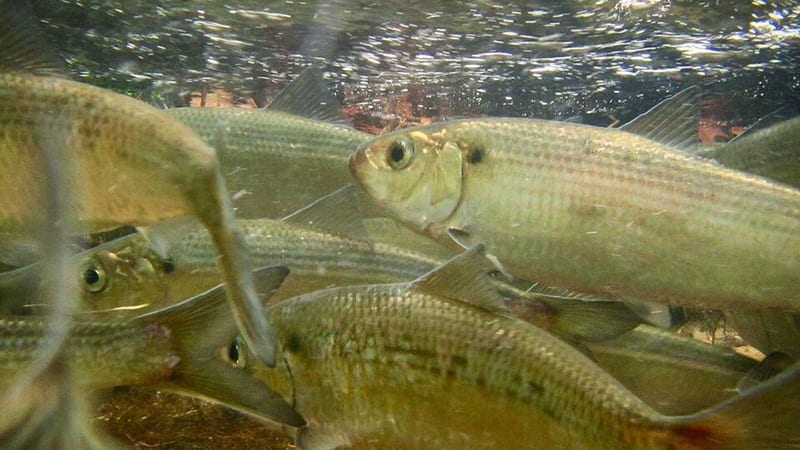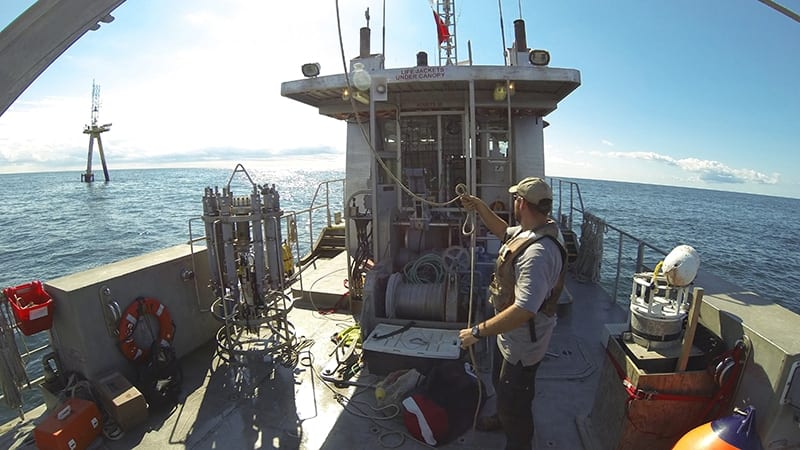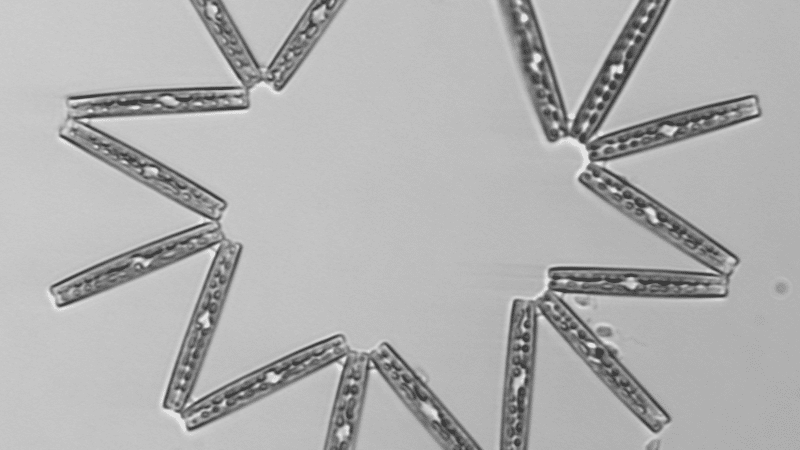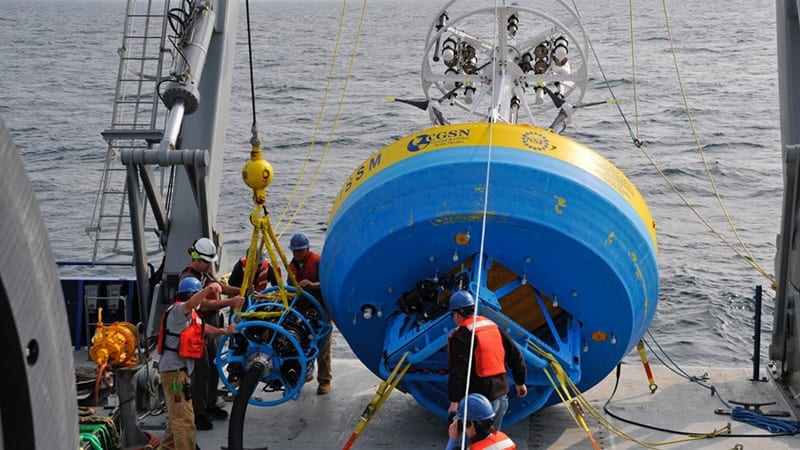A New Long-Term Ecological Research Site Announced for the Northeast U.S. Shelf
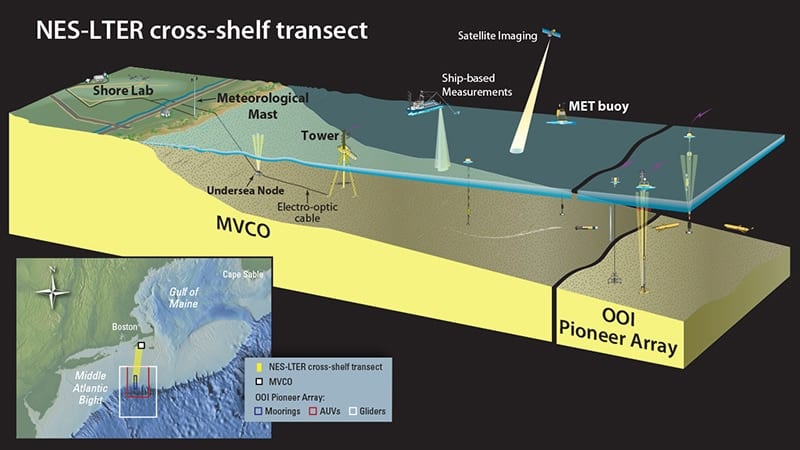 Studies at the newly established NES-LTER will help better understand and manage the intricate coastal ocean ecosystem. The site will rely on data collected from already-established, technologically advanced research locations—the Martha’s Vineyard Coastal Observatory (MVCO) to the north and the Ocean Observatories Initiative (OOI) Pioneer Array to the south—and will be bolstered by collaborations with researchers from Maine to North Carolina. (Illustration by Jack Cook, Woods Hole Oceanographic Institution)
Studies at the newly established NES-LTER will help better understand and manage the intricate coastal ocean ecosystem. The site will rely on data collected from already-established, technologically advanced research locations—the Martha’s Vineyard Coastal Observatory (MVCO) to the north and the Ocean Observatories Initiative (OOI) Pioneer Array to the south—and will be bolstered by collaborations with researchers from Maine to North Carolina. (Illustration by Jack Cook, Woods Hole Oceanographic Institution) March 1, 2017
The Atlantic Ocean off the Northeast U.S. coast is known for its productive fisheries and abundant harvests. As in other coastal oceans, human activities, short-term environmental variability, and long-term trends all affect the region’s complex food web and may threaten the viability of commercial fish populations.
To better understand and manage this intricate ecosystem, the National Science Foundation (NSF) has announced the selection of this critical ocean region for a new Long Term Ecological Research (LTER) site led by Woods Hole Oceanographic Institution (WHOI) along with researchers at the University of Massachusetts, Wellesley College, and the University of Rhode Island.
“We at WHOI are pleased to have been selected to lead the Northeast U.S. shelf LTER,” said WHOI President and Director Mark Abbott. “This important collaboration among several organizations will take advantage of two technologically advanced installations built and maintained by WHOI— the Martha’s Vineyard Coastal Observatory and the Pioneer Array, which is part of NSF’s Ocean Observatories Initiative. These arrays provide continuous information about the ocean and, along with samples collected by ships, will be integrated with ecological models to provide a better understanding of the changing Atlantic ecosystem. This knowledge will help all of us make better decisions about our ocean.”
The Northeast U.S. shelf (NES) LTER focal site spans the continental shelf with an intensive study area connecting Martha’s Vineyard Coastal Observatory (MVCO) on the inner shelf to the Pioneer Array on the outer shelf. Collaborations with scientists at other institutions will extend the studied area broadly over the continental shelf from North Carolina to Maine.
LTER programs focus attention on specific sites representing major ecosystem types, and undertake long-term assessments of populations, communities, and the physical environment. A second new LTER coastal ocean site will be in the Gulf of Alaska.
“These sites will bring new locations, new technologies, and new scientists to the challenge of understanding our coastal oceans,” said Rick Murray, director of NSF’s Division of Ocean Sciences. “The sites are in areas where there’s much commercial fishing, and both locations are in the midst of significant environmental changes.”
“Research at the new sites will matter to everyone who eats U.S. seafood, is involved in coastal industries, and depends on the coastal oceans in any way. That includes all of us, through the oceans’ importance in weather and climate, and a long list of other ‘ecosystem services’ the sea provides,” Murray said.
Scientists have already documented changes in the Atlantic off the Northeast U.S. But they have lacked the sustained, comprehensive observations needed to understand the mechanisms that link the physical ocean environment to plankton food webs and, ultimately, to fish stocks—limiting their ability to predict how the ecosystem will respond to environmental change. The NES-LTER will fill that gap.
“This is an exciting opportunity to develop a much more detailed understanding of the ocean,” said WHOI biologist Heidi Sosik, the lead PI on the project. “We want to know how different pathways in the food web may shift seasonally or through climate change. Ultimately, we hope this knowledge can help promote science-based stewardship of marine ecosystems and be applied to parts of the ocean beyond the waters of the Northeast.”
The LTER science team will conduct four research cruises a year to observe the intensive cross-shelf study area using advanced automated equipment including imaging systems to assess phytoplankton and zooplankton populations and mass spectrometers to measure gases that trace production within the food web. They will also collect plankton for high-throughput DNA sequencing.
The researchers will tap into data already being collected at the MVCO and Pioneer Array, as well as by the National Oceanic and Atmospheric Administration’s Northeast Fisheries Science Center (NOAA-NMFSC), which monitors and surveys fish stocks across the entire region.
The research program will yield large amounts of fine-scale and regional data that scientists, modelers, and theoretical ecologists will then use to better understand interactions between physical and biological systems and the flow of energy through the ecosystem from phytoplankton to fish, illuminating how the food web is structured and shifts in response to environmental changes.
To complement and broaden the impact of the research, the NES-LTER program includes a multifaceted outreach and education program, with opportunities for graduate, undergraduate, and younger students, teachers and the public. Teachers will participate in research cruises, and LTER scientists will help them develop educational content for classrooms. There are plans to produce content about marine biodiversity and ecosystem change for NOAA’s “Science on a Sphere” (SOS) displays that are located in public science facilities across the country.
Funding for the five-year project totals six million dollars, administered through WHOI, and LTER projects are renewable in six-year cycles.
The Woods Hole Oceanographic Institution is a private, non-profit organization on Cape Cod, Mass., dedicated to marine research, engineering, and higher education. Established in 1930 on a recommendation from the National Academy of Sciences, its primary mission is to understand the ocean and its interaction with the Earth as a whole, and to communicate a basic understanding of the ocean’s role in the changing global environment. For more information, please visit www.whoi.edu.

